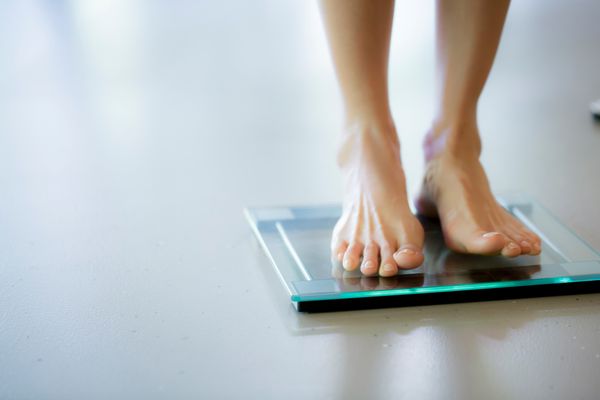The start of a new year is a time for reflection and an opportunity we give ourselves to correct our foibles and failures and set (or reset) goals.
And although you might be completely and thoroughly serious and sincere about your new start and new habits, sadly, polls show that it's only a matter of months before many of them will be broken.
Are they broken because you have no willpower to follow through? That makes you feel like a failure, doesn't it? Or, maybe they're broken because they were too lofty and unrealistic in the first place.
Here's why failure might be lurking around the corner.
1. Your resolution: I'm going to lose weight by exercising.
What's standing in your way: Many people overestimate how many calories exercise torches. To lose one pound, you need to burn about 3,500 calories more than you take in. For example, a 5-foot 10-inch, 154-pound man will burn 295 calories by running for 30 minutes at 5 miles per hour. Walking at 3 1/2 miles per hour will yield about a 140-calorie loss. If you weigh more, you'll use more calories; if you weigh less, you'll use fewer.
Make your resolution work: Change your diet to reduce your calorie intake, along with adding exercise.
Did you know? Research says that the safest and most effective way to lose weight is at a rate of between one-half to two pounds per week.
2. Your resolution: I'm going to get healthy by getting active—finally!
What's standing in your way: Only activities that are of moderate to vigorous intensity count toward meeting the physical activity recommendations for cardiovascular health. Yes, you will burn a few more calories with any kind of movement (and weight loss can improve health), but you need to increase your heart rate to improve your heart health. Some examples of moderate physical activities include dancing, walking briskly at a rate of about 3 1/2 miles per hour or bicycling at less than 10 miles per hour. Vigorous activities include running or jogging at 5 miles per hour, walking very fast at 4 1/2 miles per hour or playing singles tennis.
Make your resolution work: You need to put in the time. The American Heart Association suggests that to improve overall cardiovascular health, you should exercise moderately for at least 150 minutes per week or vigorously for 75 minutes per week (or a combination of both). You'll get the same benefits if you divide your time into two or three segments of 10 to 15 minutes per day, they say.
3. Your resolution: I'm going to cut out all temptations so I can lose weight.
What's standing in your way: Depriving yourself may only lead to cravings and bingeing. A study from the University of Toronto found that restrained eaters are more likely to experience cravings and overeat the "outlawed" food when given a chance. Before you know it, you're caught in vicious a cycle of indulging, overeating and feeling guilt.
Make your resolution work: Indulge your craving—sensibly. Buy single servings of foods you crave and allow yourself to enjoy your favorite foods every once in a while—in moderation. For instance, treat yourself, once a month, to a small ice cream cone. If you crave pizza, hold the cheese and top it with healthy vegetables.
4. Your resolution: I'm going to eat more fruits and vegetables.
What's standing in your way: Even though you know that eating enough fruits and veggies is linked to a lower risk of many chronic diseases and may help protect against certain types of cancers, you don't really like fruits and vegetables. So, how can you eat more? Or, maybe you like fruits and veggies, but eating enough just isn't convenient or is too expensive. Or they're out of season. Or you forget. You're not alone. Less than 30 percent of us fail to eat the recommended five servings per day.
Make your resolution work: Mix some berries or banana slices into your bowl of breakfast cereal. Make a smoothie with some low-fat milk or yogurt, some berries and a banana. Add mushrooms, onions, peppers or tomatoes to your eggs. Buy frozen fruits and veggies. In many cases, they're just as nutritious—or more so— than fresh, because the produce is flash-frozen right after picking. Buy precut packages of fruit (like melon or pineapple chunks) for convenience. Buy fruits and veggies in cans (if you must), but make sure the fruit is packed in 100 percent fruit juice or water (not syrup) and the veggies are low-salt or no salt (or rinse them before using if they contain salt). Keep a bowl of fresh fruit where you can see it—on the table, counter or in the refrigerator, at eye-level.
5. Your resolution: I'm going to stop eating out, because I can't lose weight if I go to restaurants.
What's standing in your way: Do you really want to turn down dinner invitations, parties and fun?
Make your resolution work: Eating out and eating healthy are not mutually exclusive. You just need to be armed with some strategies, such as: share a main dish with a friend; ask your server to pack half of your entrée in a to-go box before you start eating; choose an appetizer or small portion as your main course and supplement it with a large salad; ask for dressing on the side and, rather than pour it on, dip your fork in before each bite; request whole-wheat bread for sandwiches; drink a large glass of water before you start eating to control your hunger; and request that no bread be delivered to your table.
You may also want to read:
10 Strategies for Weight-Loss Success
Lose Excess Weight and Improve Your Overall Health
How to Find the Time to Exercise (It's Easier Than You Think)







